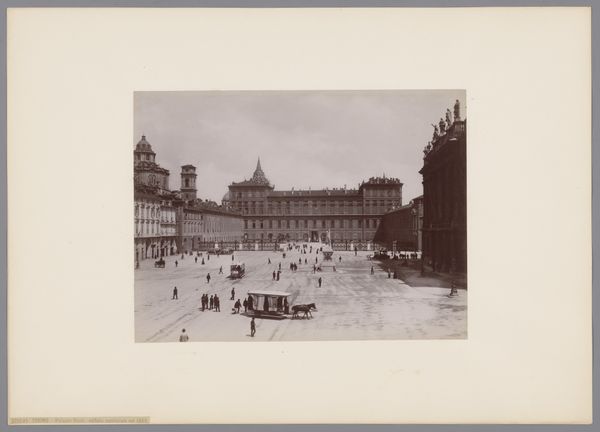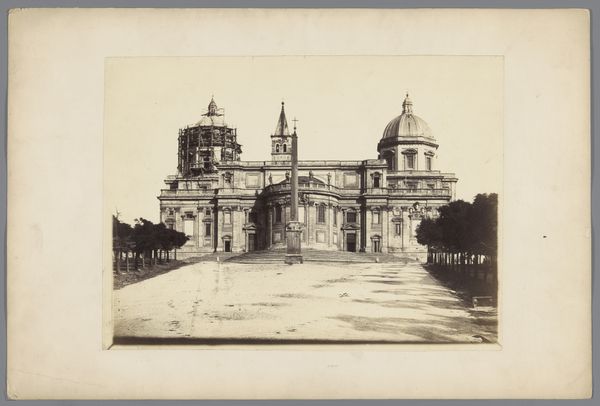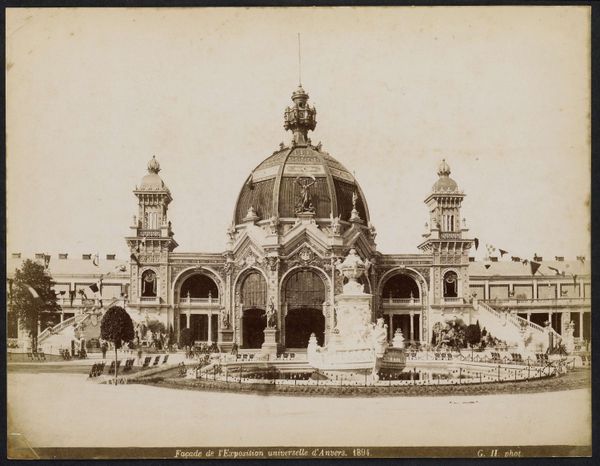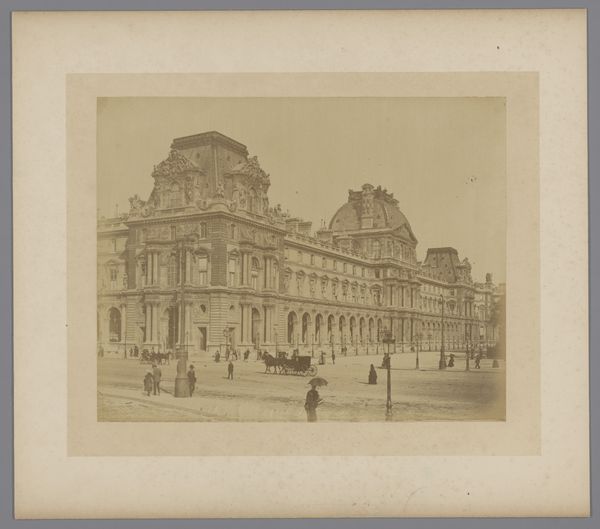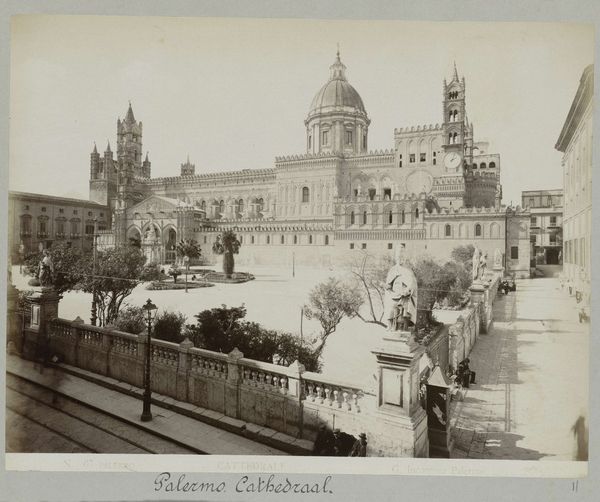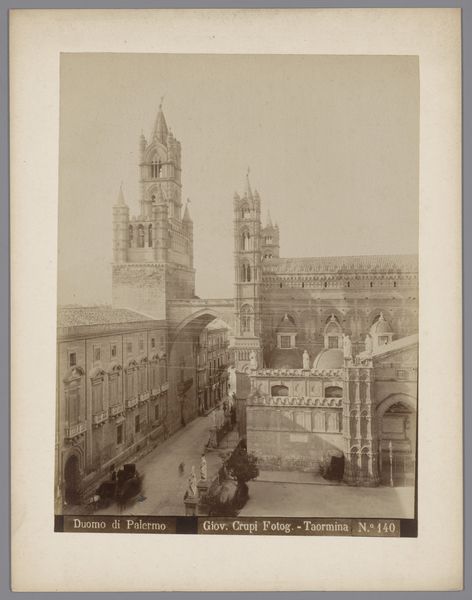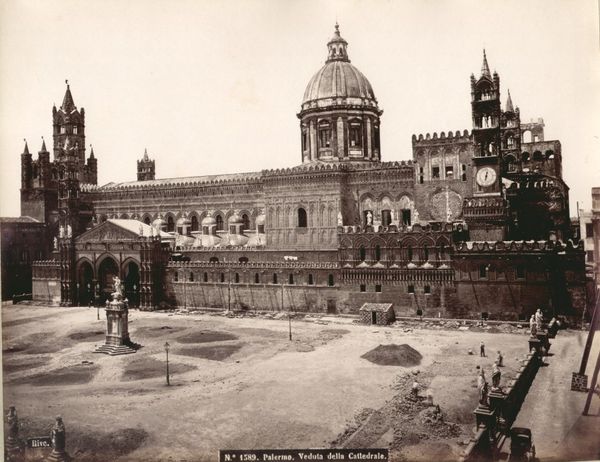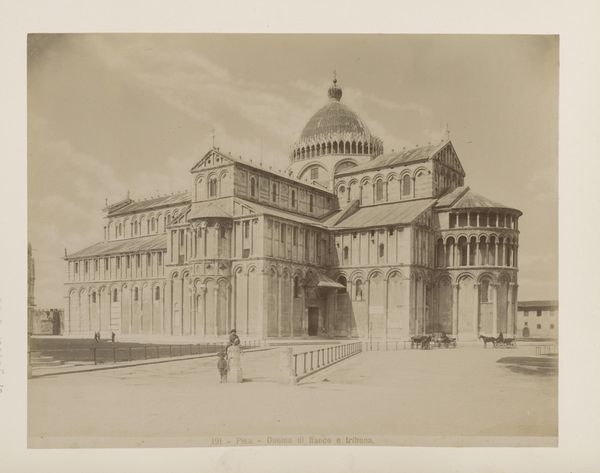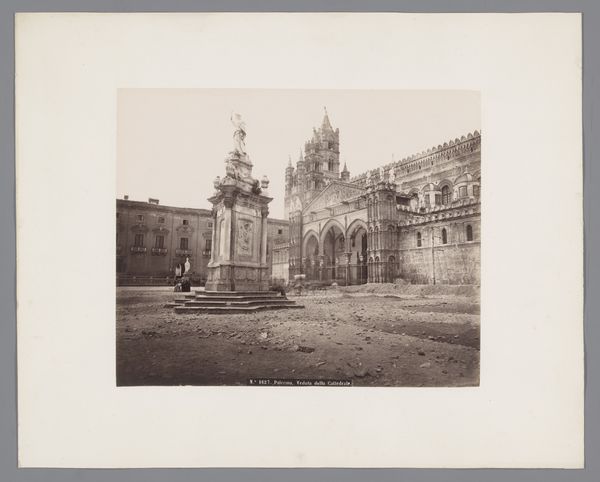
photography, albumen-print
#
landscape
#
photography
#
ancient-mediterranean
#
19th century
#
cityscape
#
italian-renaissance
#
albumen-print
#
realism
Dimensions: height 203 mm, width 256 mm, height 210 mm, width 263 mm
Copyright: Rijks Museum: Open Domain
Editor: So, here we have "Gezicht op de dom van Palermo," taken sometime between 1851 and 1900 by A. Tagliarini, using an albumen print technique. It’s a striking image! I’m really drawn to the contrasts, especially how the photographer has captured the building’s textures. What do you see in this piece? Curator: Beyond the technical aspects, which are certainly remarkable for the time, I see a powerful statement about the construction of power. The cathedral itself, a layering of Norman, Arab, and Byzantine architectural elements, speaks volumes about the complex history of Sicily and its colonisation. Think about whose stories are told and whose are erased in such a structure? Editor: That’s interesting. I hadn't considered the colonial aspect so directly. It’s easy to get lost in the aesthetics of the building, but you’re right, it represents layers of different cultures and periods. What about the empty plaza in front? Curator: Exactly. What does that emptiness signify? Perhaps it’s about the power of the church dwarfing the everyday lives of the people. Or, maybe it suggests a longing – a visual absence of those who were marginalized in the making of this history. It compels us to confront the imbalances embedded within the dominant narratives. What stories aren't being shown? Editor: So, the photo isn’t just a representation of a building, but a prompt to think about its historical and political context. Thanks, I'll be paying a lot more attention to what buildings represent now! Curator: And remember, photography itself isn't neutral. Early photographers like Tagliarini were active participants in constructing visual narratives. They captured a particular viewpoint. By acknowledging these elements, we have the chance to decode historical viewpoints.
Comments
No comments
Be the first to comment and join the conversation on the ultimate creative platform.


